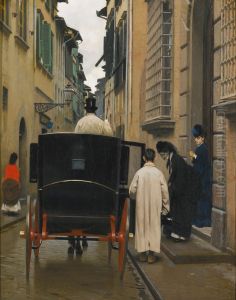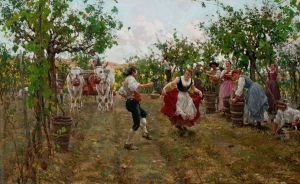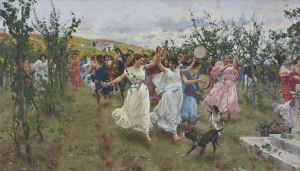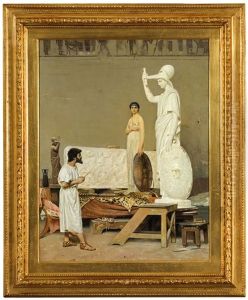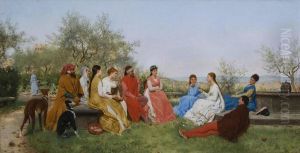Raffaello Sorbi Paintings
Raffaello Sorbi was an Italian painter, born in Florence, Italy, in 1844. He is best known for his historical and genre paintings, which are often characterized by their vibrant depiction of Italian life and culture during the Renaissance and other periods. Sorbi was a prominent member of the Macchiaioli group, a movement that sought to bring about a revolution in Italian painting, emphasizing light and color over the detailed narrative and formalism that dominated the art of their time. Despite this affiliation, Sorbi's work often bridged the gap between the Macchiaioli's innovative techniques and the more traditional, academic painting style of the 19th century.
Sorbi received his early training at the Academy of Fine Arts in Florence, where he was influenced by the works of the Renaissance masters. This influence is evident in his meticulous attention to detail and his fascination with historical themes. Throughout his career, he enjoyed considerable success, receiving commissions from notable figures and institutions, including the Italian royal family.
His oeuvre includes a wide range of subjects, from scenes of everyday life in the Italian countryside to grand historical narratives and portraits. Some of his most celebrated works depict scenes from the lives of the Medici family, events from the Italian wars of independence, and idyllic moments of peasant life. These paintings are appreciated for their dynamic compositions, luminous color palette, and the ability to evoke a sense of nostalgia for Italy's past.
Raffaello Sorbi's work was exhibited internationally during his lifetime, and he was awarded numerous prizes and honors, contributing significantly to his reputation both in Italy and abroad. Despite the changing trends in art and the rise of modernist movements at the turn of the century, Sorbi remained dedicated to his stylistic principles, continuing to produce works that resonated with the public and critics alike until his death in Florence in 1931. Today, his paintings can be found in many major museums and collections around the world, where they continue to be celebrated for their beauty and historical value.
